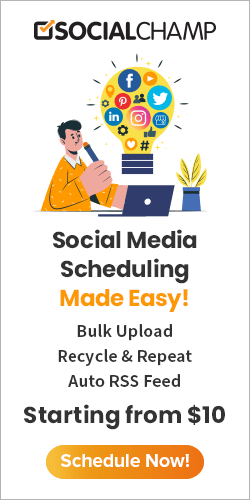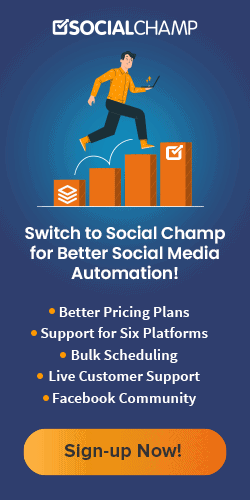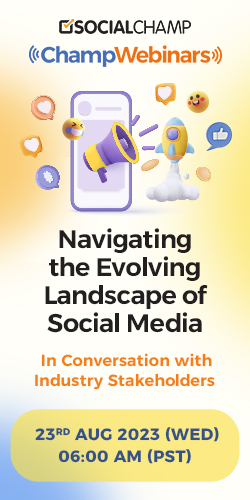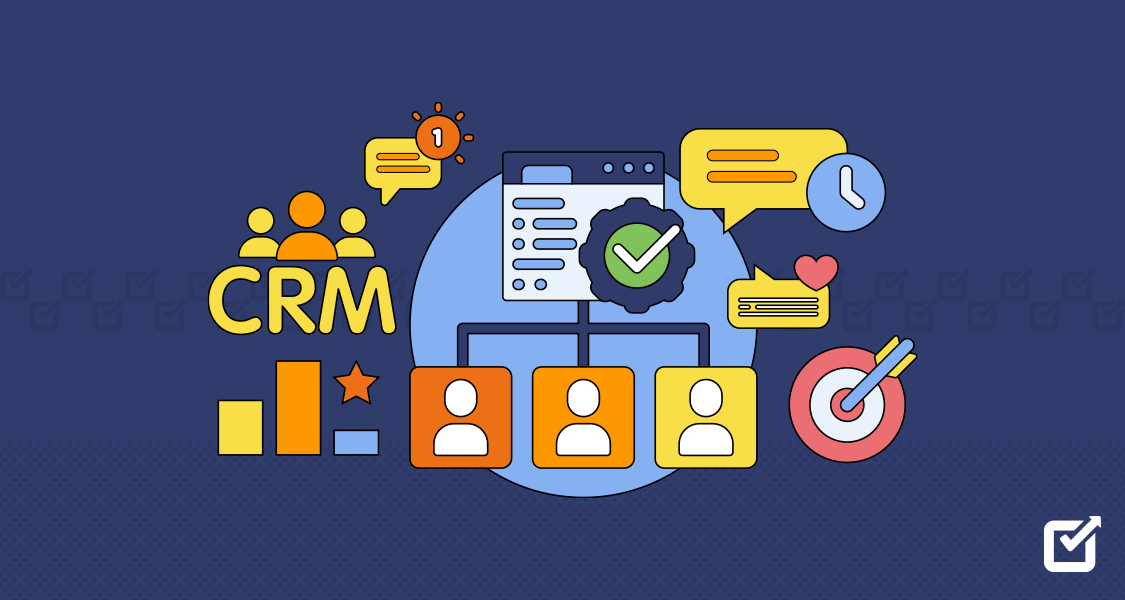Social media advertising is constantly growing, and Meta remains a powerful platform to reach a massive audience. But with billions of users and ever-changing algorithms, simply boosting a post just won’t cut it anymore. In 2024, success needs a lot more that resonates with your ideal customer.
Here’s the secret tip that will streamline your workflow and ensure consistent ad delivery: social media schedulers. A social media scheduler enables individuals and businesses to efficiently plan, create, and automate content posting across various social media platforms.
So, get ready to learn how to advertise on Facebook in 2024. With a well-defined strategy and the help of a trusty social media scheduler, you’ll be well on your way to reaching your target audience and achieving your advertising goals!
Let’s get started.
What Are Facebook Ads?
Facebook Ads are a form of online advertising that allows businesses to promote their products, services, or brands to a highly targeted audience on Meta. Utilizing Facebook’s extensive user data, advertisers can create personalized and relevant ad campaigns that reach users based on various criteria, such as demographics, interests, behaviors, and location. This precise targeting capability is one of Facebook Ads’ key advantages, making it a powerful tool for digital marketers.
Ready to Master Facebook Posting in 2024? Try Social Champ!
For a streamlined experience, manage and schedule your Facebook content using Social Champ.
Creating a Facebook ad campaign involves several steps. First, businesses must define their advertising objectives, which can range from increasing brand awareness and driving website traffic to generating leads and boosting sales.
Once the objectives are set, advertisers can choose the ad format that best suits their needs. Facebook offers a variety of ad formats, including image ads, video ads, carousel ads, slideshow ads, and collection ads, each designed to capture users’ attention and engage them effectively.
Overall, Facebook Ads are an effective tool for businesses of all sizes looking to enhance their online presence, reach new customers, and achieve their marketing goals. With its robust targeting options, diverse ad formats, and comprehensive analytics, Facebook Ads provides a powerful digital advertising platform.
Related Article: Tips and Best Practices for Building a Facebook Community for Your Business in 2025
Why Advertise on Facebook?
Advertising on Facebook offers a multitude of benefits that make it an essential platform for businesses aiming to enhance their marketing efforts. Among the key advantages are building brand awareness and gaining valuable audience insights. These elements are crucial for developing effective marketing strategies and achieving long-term business success.
Cost-Effectiveness
Advertising on Facebook can be highly cost-effective, particularly for small and medium-sized businesses with limited marketing budgets. The platform allows advertisers to set their own budgets and bidding strategies, giving them control over how much they spend. Additionally, Facebook’s detailed analytics provide insights into ad performance, allowing businesses to optimize their campaigns and ensure their advertising dollars are spent wisely.
Advanced Targeting Capabilities
One of the standout features of Facebook advertising is its sophisticated targeting options. Advertisers can pinpoint their audience based on a multitude of criteria, including demographics (age, gender, location), interests (hobbies, pages liked), behaviors (purchase history, device usage), and more. This level of precision allows businesses to deliver highly personalized ads to the users most likely to be interested in their products or services. This increases the effectiveness and efficiency of their advertising campaigns.
Enhanced Brand Awareness and Engagement
Advertising on Facebook helps businesses increase brand awareness and foster engagement with their audience. Well-crafted ads can capture users’ attention, generate interest, and encourage interaction through likes, comments, and shares. This engagement boosts visibility and builds a sense of community and loyalty around the brand.
Constantly Growing Platform
Facebook continually updates and enhances its advertising tools and features, providing businesses with new opportunities to innovate and stay ahead of the competition. By keeping up with the latest developments on the platform, advertisers can utilize cutting-edge strategies and techniques to maximize their campaign effectiveness.
Support for Various Business Objectives
Whether the goal is to drive website traffic, generate leads, increase app downloads, boost sales, or simply raise brand awareness, Facebook offers advertising solutions tailored to different business objectives. Advertisers can choose specific campaign objectives that align with their goals, ensuring that their ads are designed to achieve the desired outcomes.
Gaining Audience Insights
One of the most powerful aspects of advertising on Facebook is gaining deep insights into your audience. Facebook provides comprehensive analytics and data that help businesses understand their customers better and refine their marketing strategies.
Facebook’s analytics tools offer detailed metrics on ad performance, including reach, engagement, click-through rates, and conversions. These insights help businesses judge their campaigns’ effectiveness and identify areas for improvement.
Related Article: Everything You Need to Know About Facebook Blueprint in 2025
How to Advertise on Facebook
If you want to advertise on Facebook, here are a few steps that you need to follow:
Set Up Your Facebook Business Page
- Create a Page: Log into your personal Facebook account and click “Page” under “Create”.

- Choose Your Page Category: Select “Business or Brand” or “Community or Public Figure.”
- Fill Out Your Page Information: Enter your business name, category, and essential details.
- Complete Your Page Profile: Add a profile picture, cover photo, website, contact details, and a description.

- Create a Page: Log into your personal Facebook account and click “Page” under “Create”.
Set Up Your Facebook Ads Manager Account
- Access Ads Manager: Go to Facebook and click “Ads Manager” under “Create & Manage”.

- Set up Payment Method: Go to “Billing” and enter your payment information.
- Create a Business Manager Account (Optional): For advanced features and team collaboration, go to business.facebook.com.
- Access Ads Manager: Go to Facebook and click “Ads Manager” under “Create & Manage”.
Define Your Advertising Objectives
You can choose your advertising objectives, which can be:
- Awareness: Brand Awareness, Reach.
- Consideration: Traffic, Engagement, App Installs, Video Views, Lead Generation, Messages.
- Conversion: Conversions, Catalog Sales, Store Traffic.
Create Your Ad Campaign
- Choose Your Campaign Objective: Click “Create” in Ads Manager and select your objective.
- Set up Ad Set: Define target audience, budget, schedule, and ad placements.

Define Your Target Audience
You can select the following:
- Demographics: Age, gender, location, language, etc.
- Interests: Pages liked, hobbies, interests.
- Behaviors: Purchase behaviors, device usage.
- Custom Audiences: Upload customer list or use website/app data.
- Lookalike Audiences: Target new users similar to existing customers.
Set Your Budget and Schedule
On Meta, you have three options:
- Daily Budget: Average amount spent per day.
- Lifetime Budget: Total amount spent over the campaign lifetime.
- Schedule: Choose continuous running or specific times/days.
Choose Ad Placements
You have two options:
- Automatic Placements: Facebook selects placements for best results.
- Manual Placements: Choose specific locations like News Feed, Stories, and Messenger, among others.
Create Your Ad
You can select:
- Ad Format: Select from image, video, carousel, slideshow, or collection.
- Ad Creative: Upload media and write a copy of the ad.
- Ad Preview: Preview how your ad looks across different placements.
Submit Your Ad for Review
Click “Publish”. Facebook reviews your ad (usually within 24 hours).
 By following these bullet points, you can effectively set up and manage Facebook ads, reaching your target audience and achieving your marketing goals.
By following these bullet points, you can effectively set up and manage Facebook ads, reaching your target audience and achieving your marketing goals.
Featured Article: Facebook Business Suite – Everything You Need to Know About in 2025
Types of Facebook Ads
Facebook offers a variety of ad formats designed to suit different marketing goals and creative needs. These ad formats allow businesses to create engaging and effective campaigns that resonate with their target audience. Here are the types of Facebook ads in detail:
Image Ads
Image ads are simple yet powerful ad formats with a single image. They are effective for showcasing products, promoting offers, or conveying brand messages.
Best Practices:
- Use high-quality, visually appealing images that grab attention.
- Include minimal text on the image (Facebook has a text overlay policy).
- Experiment with different image styles to see what resonates with your audience.
Video Ads
Video ads are dynamic and engaging, allowing businesses to tell stories, demonstrate products, or share testimonials. They can be in-feed videos, in-stream ads, or stories ads.
Best Practices:
- Keep videos short and captivating (15-60 seconds).
- Start with a hook to grab viewers’ attention.
- Use captions or subtitles for better accessibility.
- Test different video formats (e.g., square, vertical) for various placements.

A snapshot of video ads Carousel Ads
Carousel ads showcase multiple images or videos in a single ad, allowing users to swipe through the carousel to see more content. They are great for showcasing product features, telling a story, or highlighting different offerings.
Best Practices:
- Use a mix of images and videos for variety.
- Ensure each card in the carousel has a clear and compelling message.
- Use the carousel format to showcase a series of related products or steps in a process.

Slideshow Ads
Slideshow ads are lightweight video ads created from a series of images, text, and sound. They are an alternative to video ads and are ideal for businesses with limited resources or slower internet connections.
Best Practices:
- Use eye-catching visuals and concise text to convey your message.
- Add background music or narration to enhance engagement.
- Experiment with different transitions and effects to make the slideshow engaging.
Collection Ads
Collection ads combine a primary image or video with the product images below. Users who click on the ad are taken to an immersive, full-screen experience showcasing multiple products from a catalog.
Best Practices:
- Use high-quality visuals that showcase your products effectively.
- Create a seamless experience from the ad to the product page for easy shopping.
- Include a clear call-to-action (CTA) to encourage users to explore your products.

How to Set up Facebook Ads Using Meta Ads Manager in 20 Steps
Setting up Facebook ads using Meta Ads Manager involves several steps. Here’s a detailed guide on how to do it:
Access Meta Ads Manager
Go to Facebook and log in to your account. Navigate to the Ads Manager section. You can find this in the Meta Business Manager or directly at business.facebook.com/adsmanager.
Create a Facebook Ads Account
If you’re new to Ads Manager, you’ll be prompted to create an account. Enter your business information, payment method, and other required details to set up your Ads Manager account.
Navigate to the Ads Manager Dashboard
Once logged in, you’ll land on the Ads Manager dashboard. Here, you’ll see an overview of your ad account, including campaigns, ad sets, and ads.
Set Your Campaign Objective
Click on the “+ Create” button to start a new campaign. Choose the objective that aligns with your marketing goals, such as brand awareness, reach, traffic, engagement, app installs, video views, lead generation, conversions, or catalog sales.
Name Your Campaign
Give your campaign a name that clearly describes its objective and distinguishes it from other campaigns in your account.
Define Your Audience
In the Ad Set level, define your target audience based on demographics (age, gender, language), location (country, city, zip code), interests (related to your product/service), behaviors (purchase behavior, device usage), and detailed targeting (include or exclude specific demographics or interests).
Set Your Budget and Schedule
Decide on your daily or lifetime budget for the campaign. Choose whether you want to run your ads continuously or set specific start and end dates for the campaign.
Choose Ad Placements
You can select where you want your ads to appear, such as Facebook, Instagram, Audience Network, Messenger, or across all platforms (automatic placements).
Select Ad Format
Based on your campaign objective and creative assets, choose the format for your ads. Options include single image, video, carousel (multiple images or videos), slideshow, collection, or instant experience (formerly Canvas).
Create Your Ad Creative
Develop compelling ad creative that includes attention-grabbing visuals (images or videos), persuasive ad copy (headline, text, description), and a clear call-to-action (CTA) that encourages users to take the desired action.
Review Your Ad
Before launching your campaign, review all elements of your ad, including targeting, budget, schedule, ad format, creative content, and CTA. Make sure everything is accurate and aligned with your campaign objectives.
Set up Conversion Tracking
If your goal is to track conversions (such as purchases or sign-ups), set up the Facebook pixel on your website and configure conversion events to track user actions.
Choose Optimization and Delivery Settings
Optimize your ad delivery for your chosen objective (e.g., link clicks, conversions) and select your preferred bidding strategy (e.g., lowest cost, target cost, bid cap).
Add Pixel Tracking
If you have a Facebook pixel installed, ensure it’s properly configured to track events and optimize your ads based on user behavior.
Review Policies and Compliance
Review Facebook’s advertising policies and guidelines to ensure your ads comply with the platform’s rules regarding content, targeting, and ad formats.
Preview Your Ad
Use the preview tool in Ads Manager to see how your ad will appear to users on different devices and placements. Make any final adjustments if needed.
Place Your Order
Once you’re satisfied with your ad setup, place your ad order. Facebook will review your ad before it goes live to ensure it meets its policies.
Monitor Performance
After your ad is live, monitor its performance regularly in Ads Manager. Track key metrics like impressions, clicks, CTR, conversions, and ROI to assess its effectiveness.
Optimize Your Campaign
Based on performance data, optimize your campaign by adjusting targeting, creative elements, budget allocation, bidding strategies, and ad delivery settings to improve results.
Generate Reports
Use Ads Manager’s reporting tools to generate detailed reports on your ad performance. Analyze the data to gain insights and make data-driven decisions for future campaigns.
In Conclusion
Learning how to advertise on Facebook in 2024 requires a strategic approach that uses the platform’s advanced tools and features. Following this guide, businesses can create targeted campaigns, optimize ad performance, and drive meaningful results.
With a clear understanding of campaign objectives, audience targeting, creative development, and performance tracking, businesses can maximize their ROI and achieve their marketing goals on Facebook in 2024.





 By following these bullet points, you can effectively set up and manage Facebook ads, reaching your target audience and achieving your marketing goals.
By following these bullet points, you can effectively set up and manage Facebook ads, reaching your target audience and achieving your marketing goals.




















